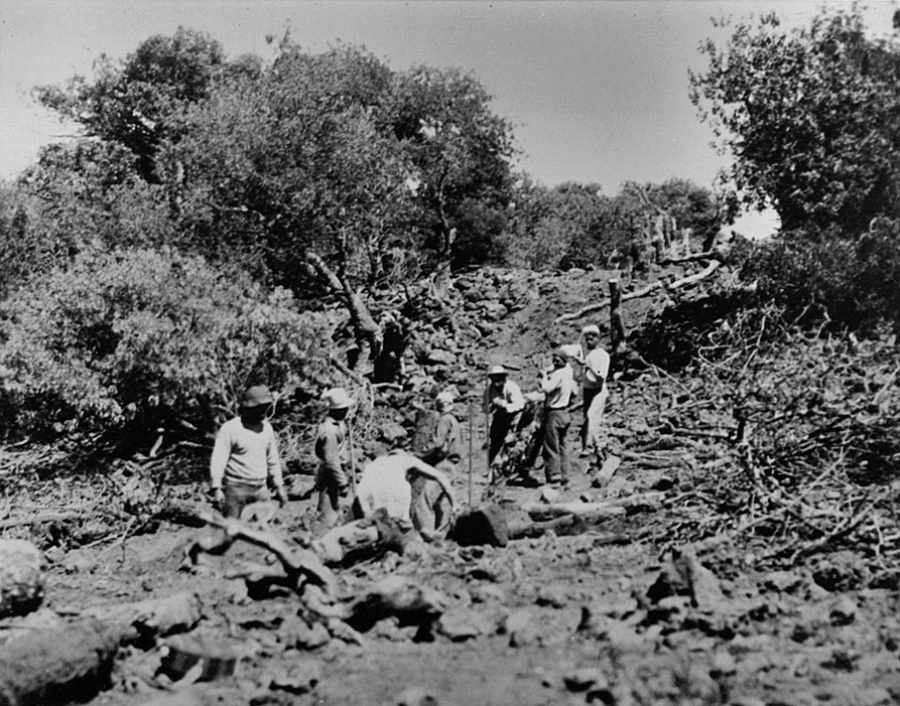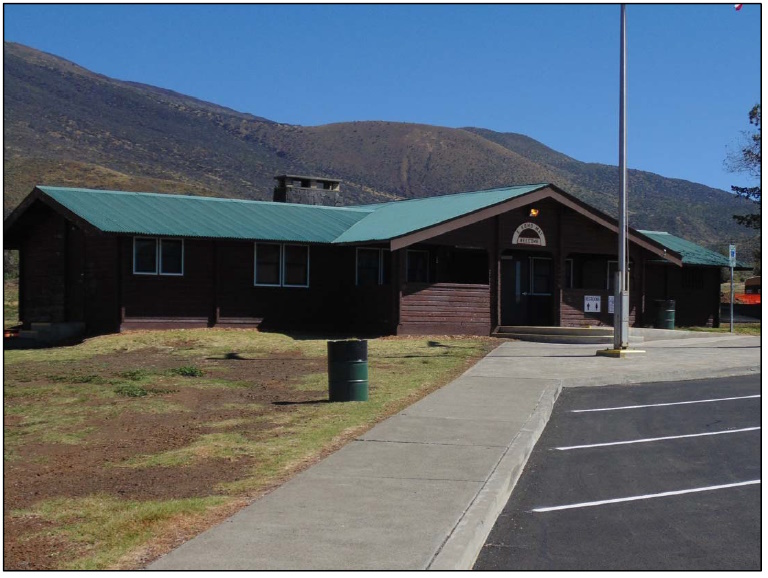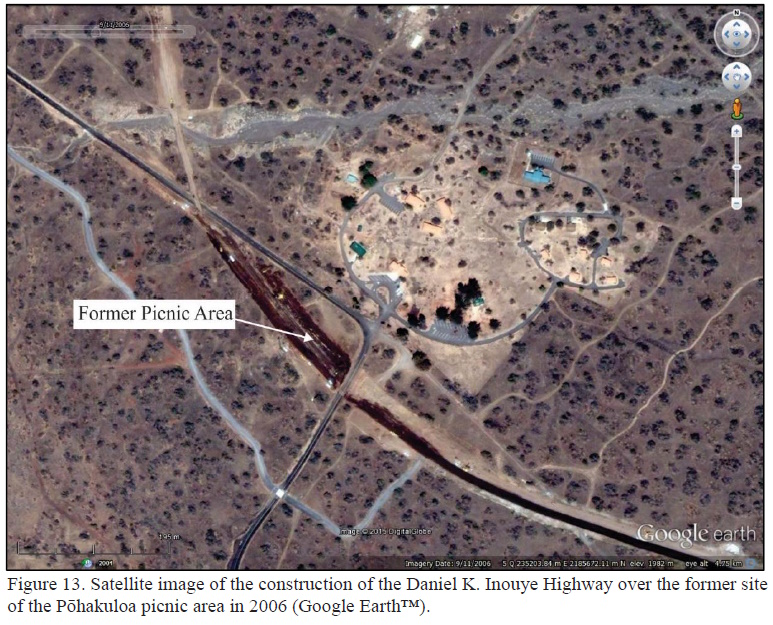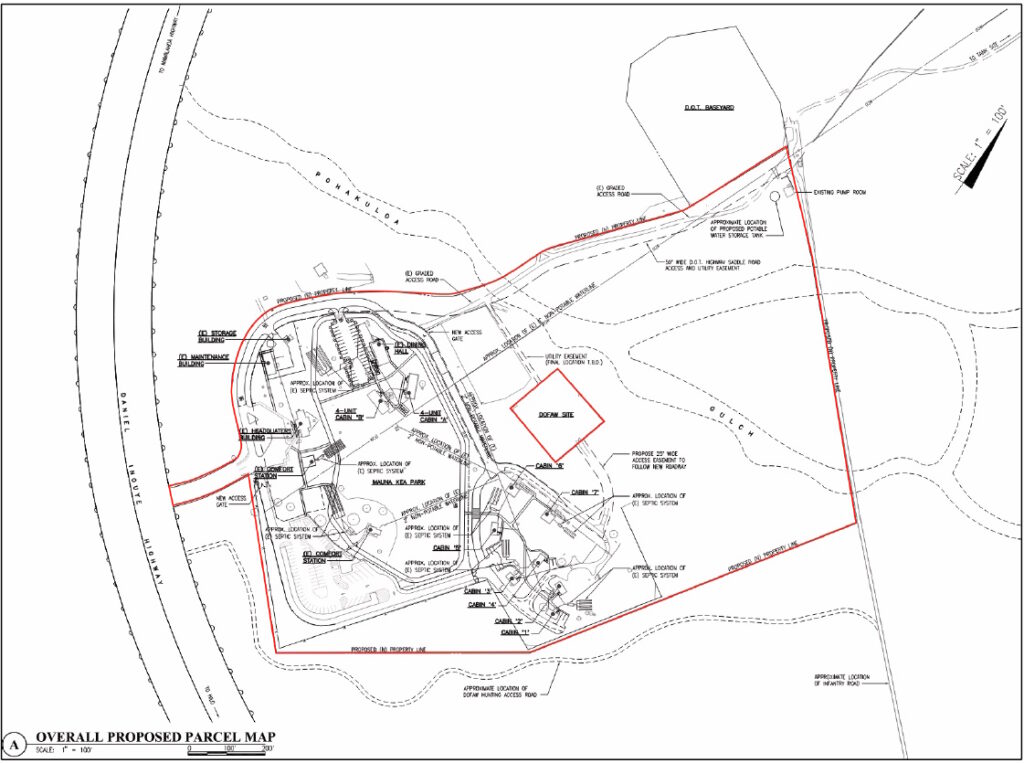In pre-contact (prior to Captain Cook) times, kalo (taro) played a vital role in Hawaiian culture. It was not only the Hawaiians’ staple food, but the cultivation of kalo was at the very core of Hawaiian culture and identity.
The early Hawaiians probably planted kalo in marshes near the mouths of rivers. Over years of progressive expansion of kalo lo‘i (flooded taro patches, pondfields) up slopes and along rivers, kalo cultivation in Hawai‘i reached a unique level of engineering and sustainable sophistication.
Hawaiians knew the productive advantages of growing wetland taro and placed the greater effort in this area very early, when required to increase food production capabilities for the rapidly increasing number of people.
By the time of Captain Cook’s visits in 1778 and 1779, every large river valley in the islands contained many loʻi (pondfields,) and each was systematically irrigated by means of ditches delivering water to the fields spread throughout the valley.
Usually, water was fed into an irrigation ditch from a stream. A loose-rock dam built across the stream allowed water to flow between and over the top of the rocks to provide for farmers living downstream. The dam functioned to raise the water level just high enough at that point to permit water to flow into the ditch leading to the terraces.
In this way the amount and speed of the water could be controlled. If too much water was found to be flowing into the ditch, a few stones could be removed from the dam, thus lowering the water level and reducing the volume of water entering the ditch.
The speed of the flow of water into the pondfields was controlled by the length and slope of the ditch. By varying the length and grade of the ditch, its builders were able to maintain a constant and low-level gradient over variegated terrain. The flow through the pond fields was controlled by the height of the terraces.
Captain George Vancouver visited Hawai‘i in 1792 and wrote, “Our guides led us to the northward through the village [Waikiki], to an exceedingly well-made causeway, about twelve feet broad, with a ditch on each side.”
“This opened to our view a spacious plain…the major part appeared divided into fields of irregular shape and figure, which were separated from each other by low stone walls, and were in a very high state of cultivation.” (Vancouver)
In 1815, the explorer Kotzebue added to these descriptions by writing about the gardens and the artificial ponds that were scattered throughout the area:
“The luxuriant taro-fields, which might be properly called taro-lake, attracted my attention. Each of these consisted of about one hundred and sixty square feet, forms a regular square, and walled round with stones, like our basins.”
“This field or tank contained two feet of water, in whose slimy bottom the taro was planted, as it only grows in moist places. Each had two sluices. One to receive, and the other to let out, the water into the next field, whence it was carried farther.” (Kotzebue)
Of the lo‘i types, “More common are stone-faced pondfields constructed either on [alluvial] slopes or alluvial terraces (SB), but not directly in stream channels; this is the dominant pondfield type ….”
“[T]he stone facing is generally a veneer of one-stone or two-stone thickness. Such facings apparently add stability to pondfields on steeper slopes; they may also be a means of removing unwanted loose stone from the soil media.”
[But, they are not the only type of lo‘i.] “These pondfields have been artificially filled, in contrast to the barrage fields which catch stream sediment.” (Kirch)
Stone-walled barrage pondfields “are what Spencer and Hale (1961:8) term ‘narrow channel barrage terraces.’ They were constructed by building a barrage of stones across a narrow stream channel (usually intermittent or with little flow) …”
“… and allowing soil and rock to accumulate behind the stone facing, thus creating a level planting surface which spread and impounded the channel’s waterflow.” (Kirch)
The barrage was sometimes “in sequential system of terraces … [providing] high level of context for function as an agricultural terrace and/or for water or soil retention or movement”. (Kamakakūokalani)
David Malo explained how a taro garden could keep a large number of people in vegetable food continuously: “Some farmers did not plant a great deal at a time. They would plant a little, and after waiting a few months, they planted more land.”
“So they continued to plant a little at a time during the months suitable for planting. The food did not all ripen at once, and by this plan the supply was kept up for a long time and they had no lack of food.” (Malo)
An acre of irrigated pondfields produced as much as five times the amount of taro as an acre of dryland cultivation. Over a period of several years, irrigated pondfields could be as much as 10 or 15 times more productive than unirrigated taro gardens, as dryland gardens need to lie fallow for greater lengths of time than irrigated gardens.
Rev. Armstrong suggested that there would be ‘food enough for ten persons’ on an acre of average taro land in Honolulu, that is, subsistence for ten persons.
“With proper management, kalo (taro) land needs no rest. So the natives tell me. Let the water be kept constantly upon it and the weeds cleared out and that is all that is needed. The kalo plants, however, must be changed every crop. It requires about a year to bring a crop of kalo to maturity.” (Armstrong)
Rev. Johnson of Hanalei, Kauai, a noted wetland taro-producing valley, suggested that 25 people subsist on an acre of good taro land.
Writing from his experiences on the well-watered windward side of Oʻahu, Rev. Parker wrote: “An acre of kalo land would furnish food for from twenty to thirty persons, if properly taken care of. It will produce crops for a great many years in succession, without lying fallow any time.”
Rev. Bishop, writing from ʻEwa District on Oʻahu, suggested that 15-20 people could be fed from an acre of taro: “Good kalo land, irrigated by water, improves by cultivation. It only requires time enough between crops to rot the weeds, which serve as manure.”
Rev. Emerson lived and worked in Waialua District on Oʻahu where several large rivers and numerous springs watered the land. He wrote: “Twenty persons, I think can be fed on an acre of good kalo land.”
“The land can generally be cultivated perpetually, if it has two or three months between each crop, in which to decompose the weeds which might grow during the time the kalo was ripening.”
“I have a large kalo patch that has not been left to rest one month at a time for fifteen years, and yet it produces as largely as fifteen years since. I presume the same parch was cultivated centuries before I knew it. It requires one year for kalo to come to maturity.” (Bishop)











































